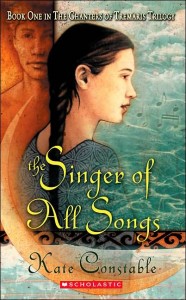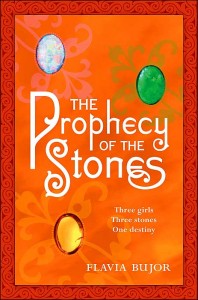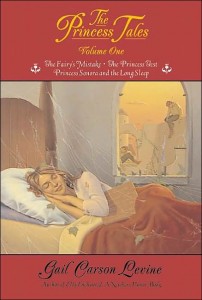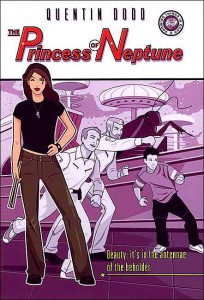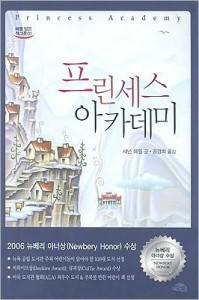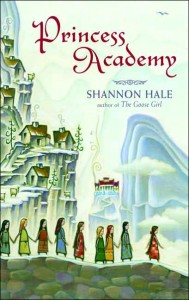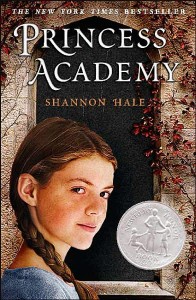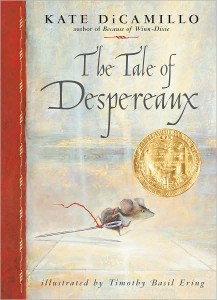 The Tale of Despereaux is the story of a mouse, a rat, a princess, a serving girl, a spool of thread, and some soup. Recounted by an unnamed observer, it’s a modern fairy tale that evokes an older style of storytelling, complete with backtracking plot explanations, and shared confidences with the reader. Add in the whimsical artwork accompanying it, and what you have is an all-new tale that would nevertheless fit right in with older collections.
The Tale of Despereaux is the story of a mouse, a rat, a princess, a serving girl, a spool of thread, and some soup. Recounted by an unnamed observer, it’s a modern fairy tale that evokes an older style of storytelling, complete with backtracking plot explanations, and shared confidences with the reader. Add in the whimsical artwork accompanying it, and what you have is an all-new tale that would nevertheless fit right in with older collections.
The mouse is Despereaux, whose small body and big ears sets him apart physically from his family, just as much as his inquisitive nature and keen mind do. Right from the start, he’s more interested in listening to music, and reading books, than he is eating cheese and scurrying. However, his yearnings put him at odds with his people, and soon he’s sentenced to death, thrown into the dungeons of the castle they inhabit, doomed to be eaten by rats. The rat is Roscuro, so obsessed by the light of the outside world that he’s willing to leave his dungeons and brave the dangers of the unknown … until he learns what sort of a reception a rat gets. The princess is named Pea, a sweet, beautiful girl who trusts in the goodness of mice and men with all her heart. And the serving girl is Miggery Sow, sold by her father into slavery and ultimately freed to work in the castle. Her ambitions outmatch her potential, and her laziness outstrips her intelligence, qualities which will make her the perfect pawn. These four characters soon find their paths crossing and it’ll take the bravery of one small mouse to put things right.
This is a charming little story that’s already earned a lot of favorable press for good reason. It’s not often such a worthy addition to an already crowded stable of fairy tales comes along, and Despereaux is the sort of hero that you just can’t help but want to succeed against all the odds. I hope we’ll see more from this writer/artist team, and hopefully more of their mouse champion.




